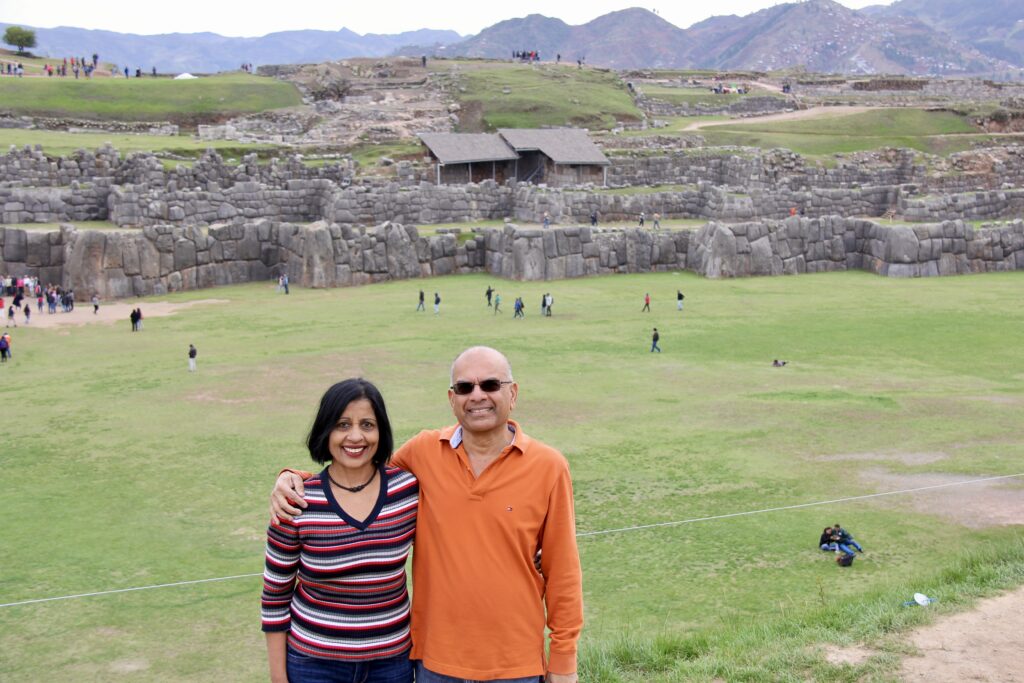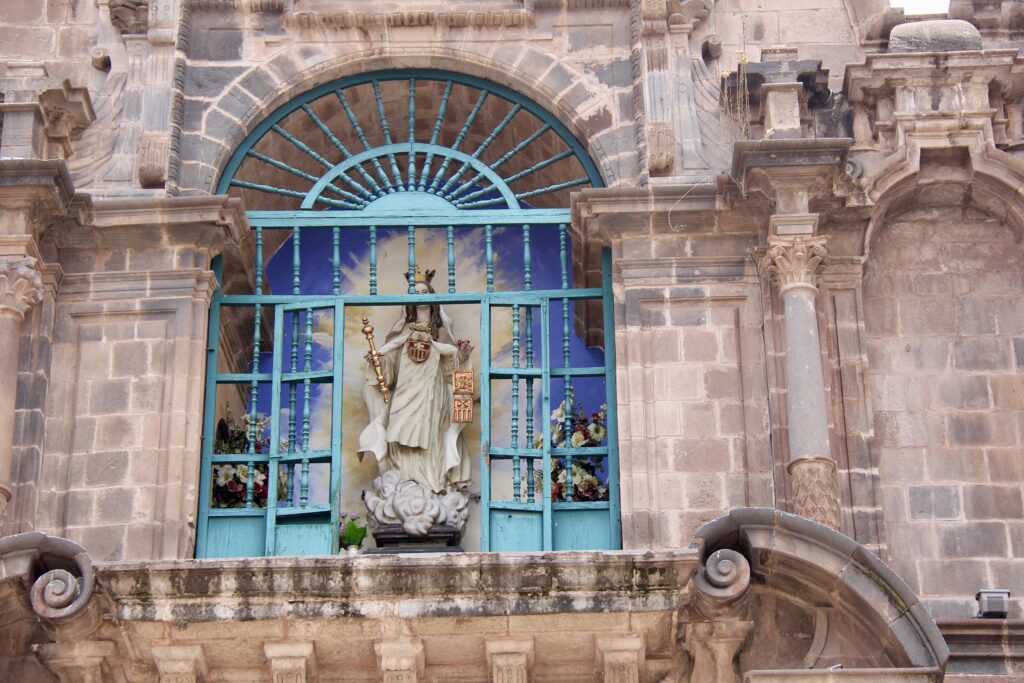We took a flight from Lima to Cusco on Day 2 of our trip. Cusco is a UNESCO World Heritage Site with cobblestone streets and over 1,000-year-old ruins and often considered as the springboard to Machu Picchu. It was the capital of the Inca Empire (13th century – 1532) and the city was planned in the shape of a puma, a sacred animal. How Cusco was specifically built, or how its large stones that were used to construct the Inca Walls, were quarried and transported to the site remain undetermined.
One thing to be aware of when visiting Cusco is that it is at an altitude of 11,000 feet / 3440 meters. It is not unusual to have altitude sickness. It is advisable to relax and rest for a few hours to get acclimatized to the altitude before embarking on any kind of city tour. Cusco is a town which is hilly, with streets rising up and down in all directions. It is normal to get quickly out of breadth or feel light headed when walking uphill, because of the high altitude. Drink lots of water and limit alcohol consumption until you get used to the altitude.
We were lucky to be able to acclimatize to the altitude within a few hours after which, we went on a self guided walking tour of the city.
Plaza de Armas – The Plaza de Armas has been the heart of Cusco from the time of the Inca Empire, when the square was called Huacaypata or Aucaypata.

The Cusco Cathedral, on the northeast side of the Plaza de Armas is the main attraction, and you’ll often find both locals and tourists relaxing on its steps. The southeastern side of the main square is dominated by the church of La Compania, which is easily mistaken for the cathedral because of its ornate façade. However, it is smaller and lacks the grand stairs in front. The other two sides of the Plaza de Armas are lined with colonial arcades.


Inca Wall – One will come across the ancient Inca Walls all over the city. These intricately constructed Inca walls that line the narrow streets are the foundations of today’s Cusco. Some of the best places to see them are along the streets of Loreto and Hatunrumiyoc. Inca walls line both sides of Loreto, which runs southeast from the Plaza de Armas. You will notice that the stones are laid so precisely that the use of mortar to hold them together was not necessary. In fact, so perfectly the stones fit, that a piece of paper would not fit between them



Sacsayhuaman – The massive and impressive fortified complex of Sacsayhuaman is the most significant ruin in Cusco, and is located on a steep hill that overlooks all of Cusco. Sacsayhuaman is thought to have both military and religious significance. Cusco was designed in the shape of a puma, with Sacsayhuaman as the head. Three ramparts of zigzagging defense walls extend for almost 300 meters, forming the teeth of the puma.




Santo Domingo and Coricancha -The church of Santo Domingo is built on the ruins of the famous Inca site of Coricancha, the Templo del Sol or Temple of the Sun. Coricancha (Q’orikancha in Quechua) means “golden courtyard” and its walls were once lined in sheets of solid gold. All this was stripped by the conquistadors soon after they arrived in Cusco, and most of the gold was melted down. All that remains today of the once glorious Coricancha is the fine Inca stonework, which forms the foundation of the church of Santo Domingo.


Cusco Churches – As we walked around the city, we passed by some beautiful churches like La Merced and San Francisco.


